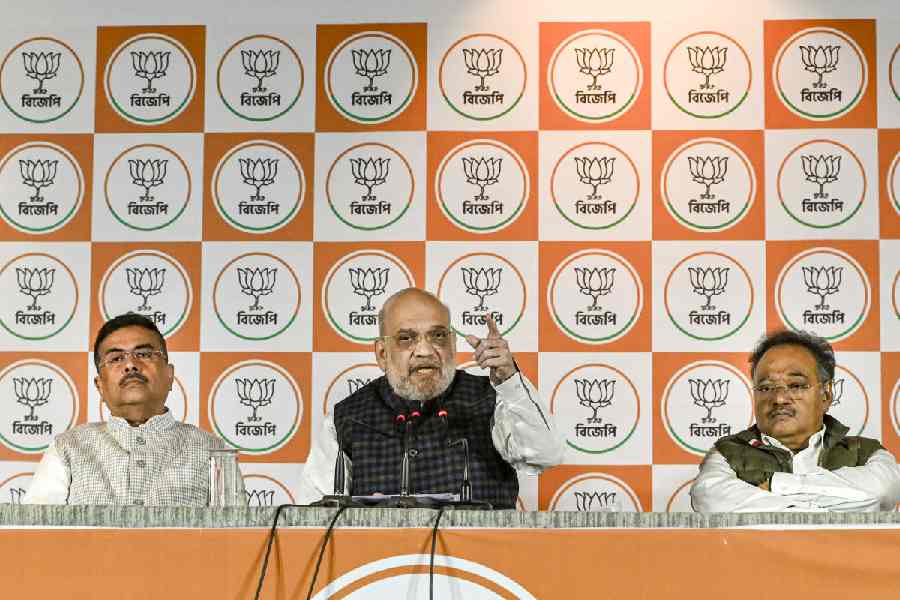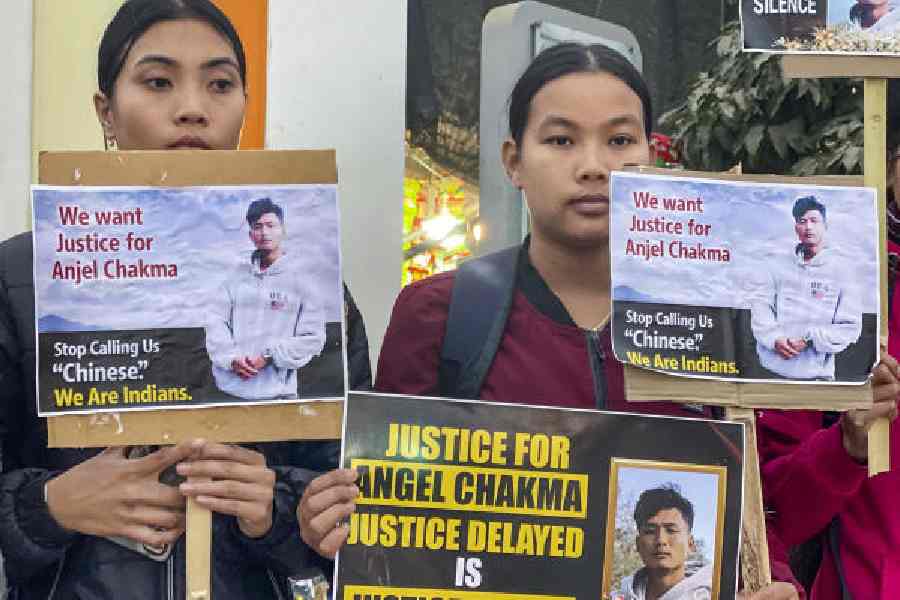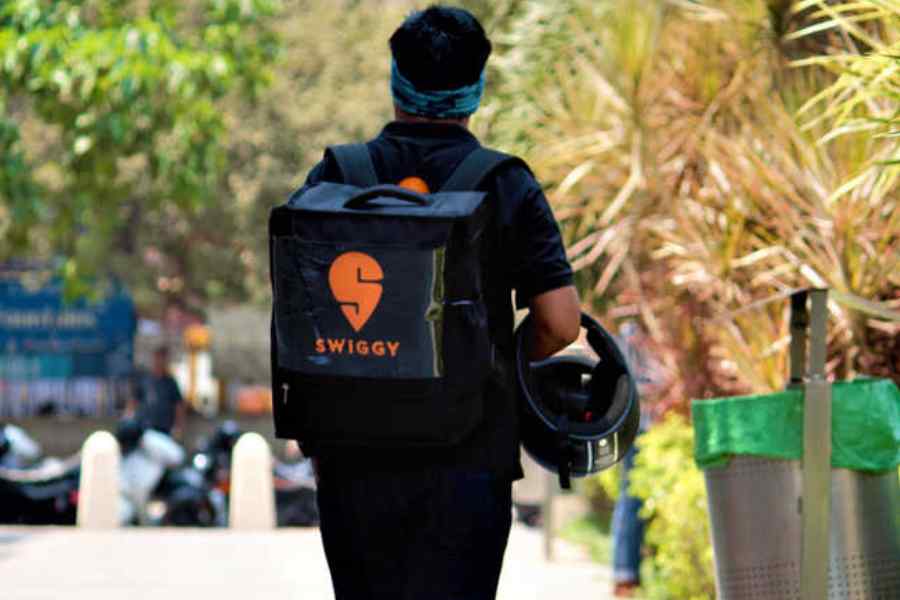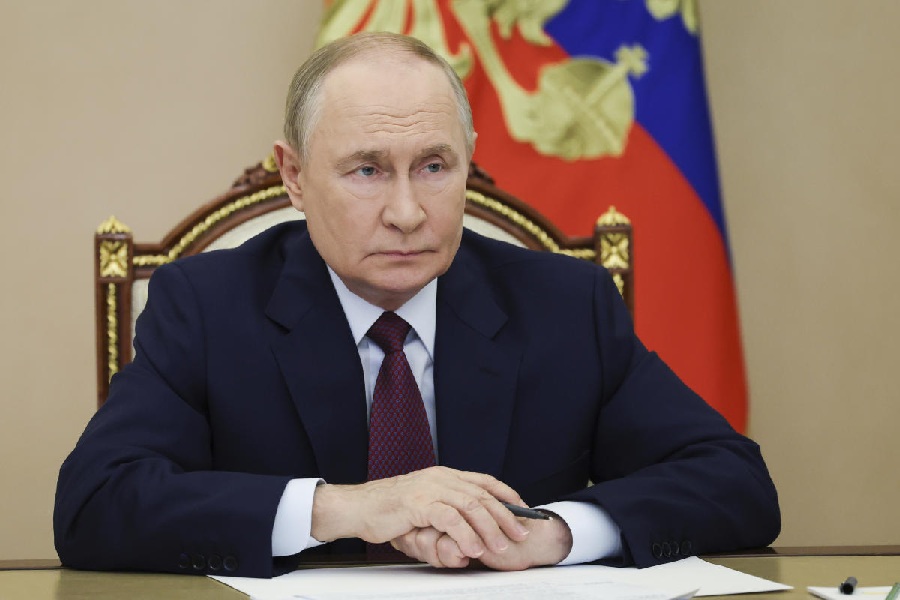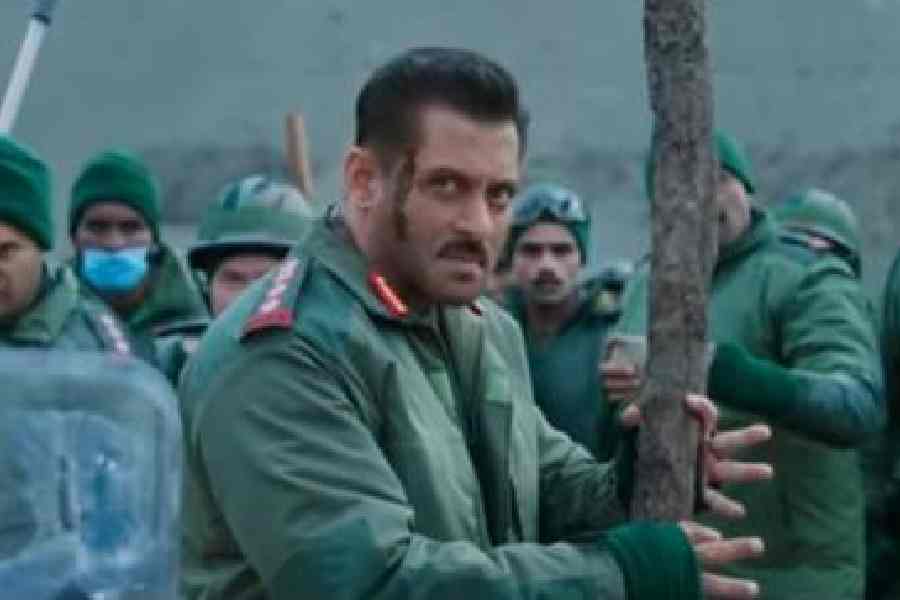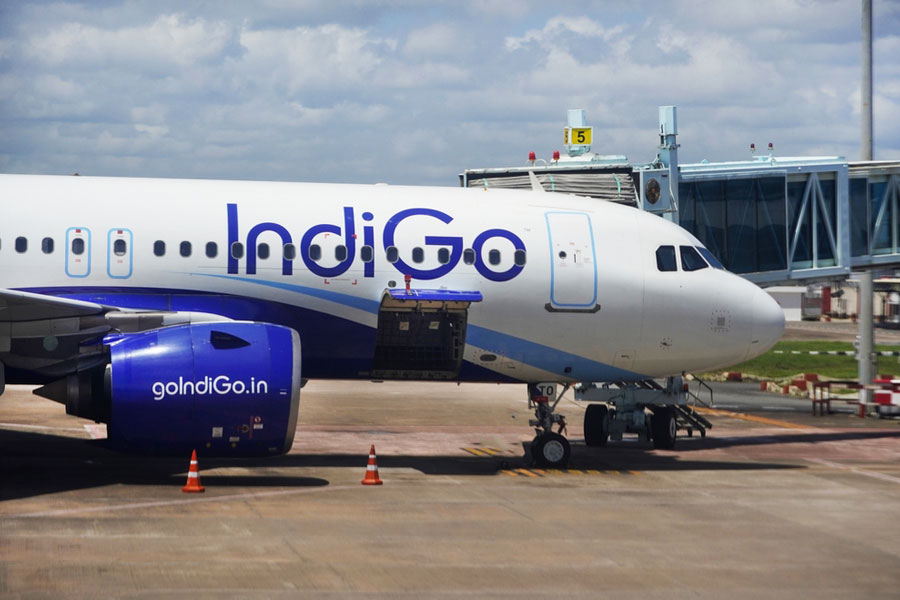Indira Gandhi sat in front of a dressing table, while a make-up artist worked on her hair. She had to be ready for a television interview with British actor and television presenter Peter Ustinov. And in the evening, she was to host a dinner in honour of Princess Anne of Britain, Queen Elizabeth II and Prince Philip's daughter, who was visiting India.
The Prime Minister wanted some changes to be made to the guest list for the dinner and dictated them to her long-time aide, R.K. Dhawan, who noted them down carefully.
'There has not been a single day since then when I have not thought about the chain of events of the morning of October 31, 1984,' Dhawan, 76, says.
Gandhi, in a pale orange sari and black sandals and carrying a red cloth bag, walked out of her official residence at 1, Safdarjung Road, towards her office at 1, Akbar Road, abutting the residence. Ustinov was waiting there to conduct the television interview. Her attendant, head constable Narain Singh, held an umbrella over her, shielding her from the sun so that her make-up wouldn't be ruined.
As she walked across the lawn, she saw a server carrying a tea set, which was to have been placed in front of Ustinov and Gandhi during the interview. Not this one, she said, and instructed him to bring out a fancier tea set. Then she walked on the small cemented path of around 20 metres, surrounded by neem and oak trees, towards the gate separating the official residence and her office.
She folded her hands to say namaste to the guards stationed there when bursts of gunfire from the other side of the gate felled the Prime Minister. It was 9.09am.
-

File pictures of R.K. Dhawan (top) and Subramanian Swamy
'She was already on the ground from the shots of Beant Singh's revolver when Satwant Singh started firing with a Sten gun,' recalls Dhawan, who was only a few steps behind her. A total of 30 bullets were fired. 'It was over in a few seconds. I didn't know what to do,' he says.
Within seconds, Sonia Gandhi had come running out of the Safdarjung Road house on hearing the gunshots. Dr R. Opeh, the Central Government Health Scheme doctor on duty who was posted to the Prime Minister's house, also arrived there. The driver of the ambulance deployed there couldn't be found. So they placed her in an official car and rushed her to the All India Institute of Medical Sciences (Aiims). Gandhi's son, Rajiv, was in Contai, around 150km from Calcutta, on an election tour of West Bengal. Sonia Gandhi sat in the car, cradling her mother-in-law's head.
The white Ambassador reached Aiims within minutes. 'One of my staff members who was in the casualty department informed us that a VIP had been brought in, as he had seen the then medical superintendent, Dr A.N. Safaya, rush there. So I rushed, too,' recalls Dr Sneh Bhargava, former director of Aiims and former head of the radiology department. She was one of the doctors who attended on her.
A few kilometres away, BBC correspondent Satish Jacob had locked his house and was leaving for work when he heard the phone ring. 'I debated for a few seconds whether to ignore it, or go back in. I decided to unlock the door and take the call,' Jacob, 70, recalls. The caller, a journalist friend, told him that something seemed wrong near the PM House. He could see signs of 'frenetic activity'. An ambulance with a blaring siren had rolled out. It was just about 9.30am.
'Although I didn't know what had happened, or even if anything had happened at all, I called Vincent George, who was aide to Rajiv Gandhi, and directly asked him: 'How did this happen?' He thought I knew and said that the Prime Minister had been shot and had been taken to Aiims,' Jacob says.
-

FINAL JOURNEY : Rajiv Gandhi at the funeral
Jacob was in Aiims by 10am and after speaking to a few people, including some doctors and Dhawan, he booked a trunk call to his office in London at around 10.45am (his senior, Mark Tully, was out of town). Jacob reported that there had been an attempt on Indira Gandhi's life and that she been taken to a hospital.
There was no news from All India Radio or Doordarshan. But Delhi, the city of rumours, was already abuzz. Something had happened to the PM, the whispers went. Few knew what had actually occurred, but a First Information Report (FIR No. 241/84) was filed at the Tughlaq Road Police Station at 11.25am, based on the account of head constable Narain Singh.
Major-General J.S. Jamwal, then General Officer Commanding (GOC), Delhi Area, was in his office when he heard that the Prime Minister had been shot. 'It was around 10.30am. The first thing I did was to try and organise the troops under my command so that they could be deployed at a short notice. The news was devastating, but I had a serious job on hand,' Jamwal recalls.
Far away in Mumbai, Subramanian Swamy, then an MP from the Mumbai North East Lok Sabha constituency, was in a court fighting a case filed by lawyer Ram Jethmalani. The court was adjourned abruptly, soon after a police officer informed the judge that the Prime Minister had been shot. Swamy says he had warned Indira Gandhi not to go ahead with the army operation in the Golden Temple in Amritsar to flush out militants holed up there. It was Operation Bluestar, conducted in the shrine in June 1984, that had enraged her assassins.
-

Lok Sabha general secretary Subhash Kashyap
The two assassins were mysteriously shot at during interrogation inside an ITBP (Indo-Tibetan Border Police) booth at the Prime Minister's house soon after they surrendered. While Beant Singh died on the spot, Satwant Singh, 21, survived and was taken to the Dr Ram Manohar Lohia Hospital. R.S. Kulkarni, one of the members of a Special Investigation Team that probed the death, later wrote in a book that 444 officers and men drawn from various organisations worked in three shifts on the security of the Prime Minister's house. Two of them had turned assassins.
Dr Rajeev Sood, head of urology, Dr Ram Manohar Lohia Hospital, was in the operation theatre when a nurse informed him that Indira Gandhi had received bullet injuries and was being brought there. 'I was asked by our head of the department to receive her at the casualty. But to our surprise, the ITBP personnel brought in Beant Singh and Satwant Singh instead,' Dr Sood recalls.
Satwant Singh, he says, was on a stretcher, and screamed in Punjabi 'Sherawalan kaam kar ditta, main una nu maar ditta' (I have done a heroic deed. I have killed her). Doctors operated upon him and removed two bullets from his abdomen.
Meanwhile, doctors at Aiims were still trying to revive Gandhi. 'We had some 60 bottles of blood and we had used around 40 bottles. But her liver, lung and kidney were bleeding profusely. We could not control the flow of blood,' Bhargava says.
Rajiv Gandhi had been informed, and was waiting for a helicopter at Kolaghat on the outskirts of Calcutta that would take him to Calcutta airport from where he could catch a flight to Delhi. Pranab Mukherjee was with him.
At 1pm, Gandhi heard the BBC announce her death.
'I was sure that she had died, as the first doctor I spoke to made it amply clear that her chances of survival were absolutely remote. At noon I filed a report saying that she had died, but BBC waited for confirmation from other sources. It was 1pm in India when we announced her death,' Jacob says.
Lok Sabha secretary general Subhash Kashyap was in Calcutta for an All India Presiding Officers' Conference. As soon as he came to know of the attack, he headed for the airport, led by the then speaker of Lok Sabha, Balram Jakhar, who had also attended the meeting. A regular flight from Calcutta had been cancelled and the Boeing 737 was going to fly Rajiv Gandhi and 10 others to Delhi. Kashyap was among them — as were the governor of West Bengal, Uma Shankar Dikshit, and his daughter-in-law and future chief minister of Delhi, Sheila Dikshit.
Gandhi paced up and down the aisle on the flight, often entering the cockpit to check if there was any news from the ground. Around 2.30pm, he came out of the cockpit and went to the washroom at the back of the plane.
'He probably washed his face, composed himself and then came out. He told us 'everything is over',' Kashyap remembers.
Jakhar asked Kashyap to explain to Rajiv Gandhi the constitutional position on a person taking over as Prime Minister in a situation such as this. But Gandhi asked Kashyap to explain it to Governor Dikshit instead.
'I quoted the relevant section of the Constitution and told him that Rajiv Gandhi could take over as Prime Minister once his party nominated him. I told Rajiv Gandhi not to even think of having a caretaker Prime Minister,' Kashyap says. Sheila Dixit produced a copy of the Constitution that she had brought with her from Raj Bhawan to explain the constitutional position.
When Rajiv Gandhi reached the technical area of Palam Airport in Delhi, almost everybody was convinced that he had to take over as Prime Minister. But there was one possible problem. Some people had doubts whether President Zail Singh would administer the oath of office to Rajiv Gandhi. 'There was some tension between the two. As an alternative, I pointed out that the Vice-President could administer the oath as per the Constitution,' Kashyap says.
Gandhi was taken to Aiims from the airport. He and P.C. Alexander, Indira Gandhi's principal secretary, met in the bathroom on the eighth floor of the hospital to prevent any kind of a commotion. It was decided that the Congress Parliamentary Party would immediately meet and nominate Rajiv the Prime Minister. He was sworn in as the Prime Minister around 6.30pm by the President, who had returned from Yemen that evening.
-

Newsreader Salma Sultan
Indira Gandhi's death was announced by Dr Safaya outside the operation theatre at 4pm. She was declared dead 'at around 2.23pm or so', he announced. As the crowds that had gathered at Aiims started to disperse, the first reports of violence started coming in. Sikhs had been targeted in the Kidwai Nagar area, near the hospital.
Mobs were rampaging even as Rajiv Gandhi took over as the Prime Minister. Around 3,000 Sikhs were killed in Delhi alone in riots that continued for the next few days. 'During my investigations, it became pretty clear that I had never seen such riots in my life. They were worse than the Partition riots,' says retired police officer Ved Marwah.
Marwah, as a joint secretary in the ministry of social justice, was in Jaipur for a conference that Wednesday. 'We came to know around 11 that she had been shot. I immediately caught a bus to Delhi,' Marwah says. Within days he was appointed the additional commissioner of police in the Delhi Police and asked to investigate the riots and the conduct of the police during the riots.
'I was anguished at the death of the Prime Minister. But the riots left me very, very angry. While Indira Gandhi's assassins were brought to justice (Satwant Singh and co-conspirator Kehar Singh were executed on January 6, 1989), those who killed Sikhs in her name are roaming free to this day,' Marwah says.
-

Retired police officer Ved Marwah
Communist Party of India-Marxist leader Brinda Karat was in Connaught Place in central Delhi at an eye doctor's clinic when she came to know of the assassination attempt. Within no time mobs had started targeting Sikh establishments in the area.
'Slogan shouting crowds were roaming the streets and I could sense that there would be a lot of trouble. We learnt that Sikhs were being targeted in a very systematic way,' Karat says.
When she reached Manak Pura Chowk in the Karol Bagh area that evening, she could see columns of smoke rising from many parts of the area. 'The riots were targeted, specific and barbaric. The crowds were insane and hooligans ruled the streets that evening and all through the night,' Karat says.
But on Doordarshan, it was a normal day — at least from the outside. 'We were being informed about the developments at Aiims and were asked to be ready for the news bulletin. But when I read out the bulletin at 8pm, which was the first bulletin of the day, I did not announce that she was dead in as many words,' newsreader Salma Sultan recollects. 'I said that there had been an assassination attempt on her and she was undergoing treatment. But all of us knew that she was no more. It was difficult for me to hide the shock and grief.'
For Swamy, Indira's assassination immediately brought to mind his last encounter with her. On the last day of the monsoon session of Parliament in August that year, she met him in the corridors of Parliament.
'She held my hand and said: 'You were right. They are out to get me',' Swamy recalls.
October sky
Meanwhile, on the sidelines, a lot was happening in India
• Royal visit: Princess Anne was touring India. Indira Gandhi was to have hosted a dinner in her honour on October 31.
• Border tensions: Firing was taking place in the Poonch sector of Jammu and Kashmir; Atal Behari Vajpayee had claimed that Gandhi was “promoting war psychosis”.
• Cricket: The Indian cricket team was touring Pakistan; the tour was cancelled after the assassination.
• Tamil trouble: Chief minister M.G. Ramachandran was hospitalised and the AIADMK was witnessing a succession battle.
• City of Joy: The Calcutta Metro had started commercial operations on October 24.
• Star power: Shatrughan Sinha had shown an interest in joining politics – “You don’t need brains in politics,” he said.
• Release rush: Among the new films in theatres that week were Jaagir (Fiefdom) and Jeene Nahi Doonga (Won’t let you live), starring Dharmendra, Shatrughan Sinha and Raj Babbar – all of whom later became Members of Parliament.




